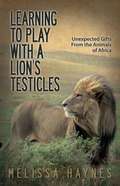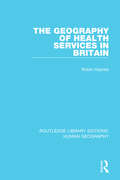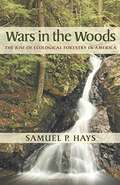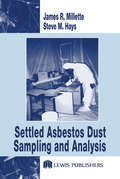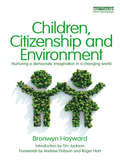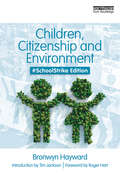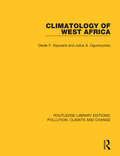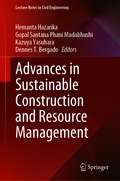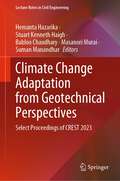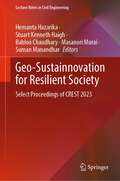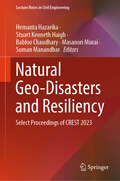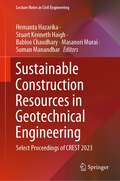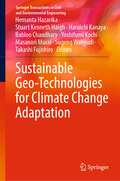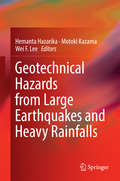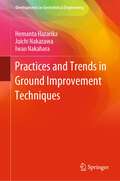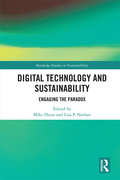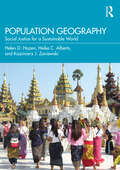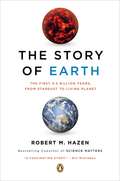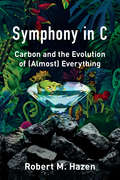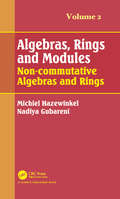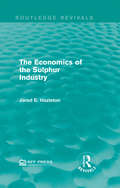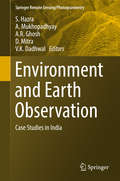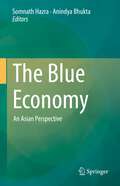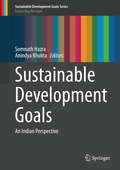- Table View
- List View
Learning to Play With a Lion's Testicles
by Melissa HaynesThe cheeky title of Melissa Haynes's story of adventure in Africa, Learning to Play with a Lion's Testicles, earned the book some big publicity on NBC-TV/Late Night with Jimmy Fallon on September 4,2013 where it topped the show's list of "Titles Not to Read" for September 2013. Melissa's book was also a big smash on the March 11, 2014 Ellen Show, where Ellen and guest Ricky Gervais highlighted the book throughout the entire hour. Playing with a lion's testicles: An African saying that means to take foolhardy chances.Melissa, an exhausted executive from the city seeks meaning and purpose from her work, and volunteers for a Big Five conservation project in South Africa. Her boss, an over-zealous ranger, nicknamed the Drill Sergeant, has no patience for city folk, especially if they're women, and tries to send her packing on day one. But Melissa stands her ground with grit and determination, however shaky it may be.Conflict soon sets the pace with a cast filled with predatory cats, violent elephants, and an on-going battle of wits with the Drill Sergeant. Even Mother Nature pounds the reserve with the worst storm in a century. But the most enduring and profound conflict is the internal battle going on within Melissa, as she tries to come to terms with the guilt surrounding her mother's death. When death grips the game reserve, it is the very animals Melissa has come to save that end up saving her.For the reader who has ever dreamed of going to Africa or knows the pain of loss and guilt, LEARNING TO PLAY WITH A LION'S TESTICLES will fill your soul.
The Geography of Health Services in Britain. (Routledge Library Editions: Human Geography #9)
by Robin HaynesThis book is about geographical variation in the organisation, provision and use of health services in Britain. Its main theme is that neither the quantity nor the quality of health care provided by the National Health Service (NHS) is uniform from place to place. Chapters discuss and evaluate: The reorganisation of the NHS in the years up to 1987 The relationships between the need for health care and the supply of health services The redistribution of health service resources geographically The distribution of doctors, dentists, community nurses and hospitals across the UK Access to health services The distribution of both private health facilities and social welfare services and their effect on the NHS.
Wars in the Woods: The Rise of Ecological Forestry in America
by Samuel P. HaysWars in the Woods examines the conflicts that have developed over the preservation of forests in America, and how government agencies and advocacy groups have influenced the management of forests and their resources for more than a century. Samuel Hays provides an astute analysis of manipulations of conservation law that have touched off a battle between what he terms “ecological forestry” and “commodity forestry.” Hays also reveals the pervading influence of the wood products industry, and the training of U.S. Forest Service to value tree species marketable as wood products, as the primary forces behind forestry policy since the Forest Management Act of 1897. <p><p> Wars in the Woods gives a comprehensive account of the many grassroots and scientific organizations that have emerged since then to combat the lumber industry and other special interest groups and work to promote legislation to protect forests, parks, and wildlife habitats. It also offers a review of current forestry practices, citing the recent Federal easing of protections as a challenge to the progress made in the last third of the twentieth century. <p><p> Hays describes an increased focus on ecological forestry in areas such as biodiversity, wildlife habitat, structural diversity, soil conservation, watershed management, native forests, and old growth. He provides a valuable framework for the critical assessment of forest management policies and the future study and protection of forest resources.
Settled Asbestos Dust Sampling and Analysis
by Steve M. Hays James R. MilletteSettled Asbestos Dust Sampling and Analysis compiles the most significant data on asbestos in settled dust. This ready reference presents an analysis of settled dusts and surface particles of all sizes for asbestosthat is useful for qualitative and quantitative assessment and helps to determine the source of fibers. The main scope of this reference includes sample collection, sample analyses, and interpretation of settled dust data, as well as the use of such data for purposes including asbestos abatement projects and in-place management programs. Sections on lead and other particulates are also included.
Children, Citizenship and Environment: Nurturing a Democratic Imagination in a Changing World
by Bronwyn HaywardChildren growing up today are confronted by four difficult and intersecting challenges: dangerous environmental change, weakening democracies, growing social inequality, and a global economy marked by unprecedented youth unemployment and unsustainable resource extraction. Yet on streets everywhere, there is also a strong, youthful energy for change. This book sets out an inspiring new agenda for citizenship and environmental education which reflects the responsibility and opportunities facing educators, researchers, parents and community groups to support young citizens as they learn to 'make a difference' on the issues that concern them. Controversial yet ultimately hopeful, political scientist Bronwyn Hayward rethinks assumptions about youth citizenship in neoliberal democracies. Her comparative discussion draws on lessons from New Zealand, a country where young citizens often express a strong sense of personal responsibility for their planet but where many children also face shocking social conditions. Hayward develops a 'SEEDS' model of ecological citizenship education (Social agency, Environmental Education, Embedded justice, Decentred deliberative democracy and Self transcendence). The discussion considers how the SEEDs model can support young citizens' democratic imagination and develop their 'handprint' for social justice. From eco-worriers and citizen-scientists to streetwise sceptics, Children, Citizenship and Environment identifies a variety of forms of citizenship and discusses why many approaches make it more difficult, not easier, for young citizens to effect change. This book will be of interest to a wide audience, in particular teachers of children aged eight to twelve and professionals who work in Environmental Citizenship Education as well as students and researchers with an interest in environmental change, democracy and intergenerational justice. Introduced by Tim Jackson, author of Prosperity without Growth, the book includes forewords by leading European and USA academics, Andrew Dobson and Roger Hart. Half the author's royalties will be donated to child poverty projects following the earthquakes in Christchurch, New Zealand. Follow Bronwyn Hayward's blog at: http://growing-greens.blogspot.co.nz/See Bronwyn Hayward discuss the book at: http://www.youtube.com/watch?v=kptEw1aZXtM&feature=youtu.be
Children, Citizenship and Environment: #SchoolStrike Edition
by Bronwyn HaywardIn this significantly revised second edition of Bronwyn Hayward’s acclaimed book Children Citizenship and Environment, she examines how students, with teachers, parents, and other activists, can learn to take effective action to confront the complex drivers of the current climate crisis including: economic and social injustice, colonialism and racism. The global school strikes demand adults, governments, and businesses take far-reaching action in response to our climate crisis. The school strikes also remind us why this important youthful activism urgently needs the support of all generations. The #SchoolStrike edition of Children Citizenship and Environment includes all new contributions by youth, indigenous and disability activists, researchers and educators: Raven Cretney, Mehedi Hasan, Sylvia Nissen, Jocelyn Papprill, Kate Prendergast, Kera Sherwood O’ Regan, Mia Sutherland, Amanda Thomas, Sara Tolbert, Sarah Thomson, Josiah Tualamali'i, and Amelia Woods. As controversial, yet ultimately hopeful, as it was when first published, Bronwyn Hayward develops her ‘SEEDS’ model of ‘strong ecological citizenship’ for a school strike generation. The SEEDS of citizenship education encourage students to develop skills for; Social agency, Environmental education, Embedded justice, Decentred deliberation and Self-transcendence. This approach to citizenship supports young citizens’ democratic imagination and develops their ‘handprint’ for social justice. This ground-breaking book will be of interest to a wide audience, in particular teachers and professionals who work in Environmental Citizenship Education, as well as students and community activists with an interest in environmental change, democracy and intergenerational justice.
Climatology of West Africa
by Derek F. Hayward Julius S. OguntoyinboOriginally published in 1987, this book brings together information previously buried in specialist sources and makes it available to the student in a non-technical and well-illustrated synthesis. It builds a clear and detailed picture of the climates of West Africa, describing and explaining them and showing how crucial this understanding is to everyday life. The climate’s relevance to water resources, agriculture, health and industry is systematically considered.
American Hazardscapes: The Regionalization of Hazards and Disasters
by Natural Hazardas DisasterBarrier islands. Flood plains. Earthquake faults. Sometimes the environment poses threats to our well being, yet many of us continue to choose to live in risky or dangerous places. And on top of the “knowns” are the other, more hidden hazards related to environmental contamination that pose equally serious threats to our health and well being.But where are these places and what types of hazards are found there? American Hazardscapes examines the risks associated with living and owning property in diverse regions across the United States, offering dual perspectives: that of the geographer and that of the social science hazards researcher. The book summarizes what we already know about regional patterns of hazard events and losses during the previous three decades and goes further to shed light on the nature of the events themselves and their impact on society.Written for the relocating citizen and the policy maker alike, American Hazardscapes presents a regional ecology of disaster-prone or disaster-resistant states. It also offers thoughts on what local, state, and federal managers need to do to meet the challenge of reducing hazard losses in the next century.
Advances in Sustainable Construction and Resource Management (Lecture Notes in Civil Engineering #144)
by Hemanta Hazarika Gopal Santana Phani Madabhushi Kazuya Yasuhara Dennes T. BergadoThis book comprises the proceedings of the 1st International Symposium on Construction Resources for Environmentally Sustainable Technologies. The contents of this volume focus on issues related to natural and man-made disasters, and discuss solutions through the use of alternative resources, towards building a sustainable and resilient society from geotechnical perspectives. Some of the themes covered include recycled materials in geotechnical constructions, management and utilization of disaster wastes, climate change independent natural disasters, socio-economic and environmental aspects in sustainable construction, physical and numerical modelling of disaster mitigation techniques, etc. This book will be beneficial to researchers, practitioners, and policy-makers alike.
Climate Change Adaptation from Geotechnical Perspectives: Select Proceedings of CREST 2023 (Lecture Notes in Civil Engineering #447)
by Hemanta Hazarika Stuart Kenneth Haigh Babloo Chaudhary Masanori Murai Suman ManandharThis book presents select proceedings of the 2nd International Conference on Construction Resources for Environmentally Sustainable Technologies (CREST 2023), and focuses on sustainability, promotion of new ideas and innovations in design, construction and maintenance of geotechnical structures with the aim of contributing towards climate change adaptation and disaster resiliency to meet the UN Sustainable Development Goals (SDGs). It presents latest research, information, technological advancement, practical challenges encountered, and solutions adopted in the field of geotechnical engineering for sustainable infrastructure towards climate change adaptation. This volume will be of interest to those in academia and industry alike.
Geo-Sustainnovation for Resilient Society: Select Proceedings of CREST 2023 (Lecture Notes in Civil Engineering #446)
by Hemanta Hazarika Stuart Kenneth Haigh Babloo Chaudhary Masanori Murai Suman ManandharThis book presents select proceedings of the 2nd International Conference on Construction Resources for Environmentally Sustainable Technologies (CREST 2023), and focuses on sustainability, promotion of new ideas and innovations in design, construction and maintenance of geotechnical structures with the aim of contributing towards climate change adaptation and disaster resiliency to meet the UN Sustainable Development Goals (SDGs). It presents latest research, information, technological advancement, practical challenges encountered, and solutions adopted in the field of geotechnical engineering for sustainable infrastructure towards climate change adaptation. This volume will be of interest to those in academia and industry alike.
Natural Geo-Disasters and Resiliency: Select Proceedings of CREST 2023 (Lecture Notes in Civil Engineering #445)
by Hemanta Hazarika Stuart Kenneth Haigh Babloo Chaudhary Masanori Murai Suman ManandharThis book presents select proceedings of the 2nd International Conference on Construction Resources for Environmentally Sustainable Technologies (CREST 2023), and focuses on sustainability, promotion of new ideas and innovations in design, construction and maintenance of geotechnical structures with the aim of contributing towards climate change adaptation and disaster resiliency to meet the UN Sustainable Development Goals (SDGs). It presents latest research, information, technological advancement, practical challenges encountered, and solutions adopted in the field of geotechnical engineering for sustainable infrastructure towards climate change adaptation. This volume will be of interest to those in academia and industry alike.
Sustainable Construction Resources in Geotechnical Engineering: Select Proceedings of CREST 2023 (Lecture Notes in Civil Engineering #448)
by Hemanta Hazarika Stuart Kenneth Haigh Babloo Chaudhary Masanori Murai Suman ManandharThis book presents select proceedings of the 2nd International Conference on Construction Resources for Environmentally Sustainable Technologies (CREST 2023), and focuses on sustainability, promotion of new ideas and innovations in design, construction and maintenance of geotechnical structures with the aim of contributing towards climate change adaptation and disaster resiliency to meet the UN Sustainable Development Goals (SDGs). It presents latest research, information, technological advancement, practical challenges encountered, and solutions adopted in the field of geotechnical engineering for sustainable infrastructure towards climate change adaptation. This volume will be of interest to those in academia and industry alike.
Sustainable Geo-Technologies for Climate Change Adaptation (Springer Transactions in Civil and Environmental Engineering)
by Hemanta Hazarika Stuart Kenneth Haigh Haruichi Kanaya Babloo Chaudhary Yoshifumi Kochi Masanori Murai Sugeng Wahyudi Takashi FujishiroThis edited volume is a compilation of peer-reviewed papers of the plenary lectures, keynote lectures, special lectures and young researcher’s special lectures delivered at the 1st International Symposium on Construction Resources for Environmentally Sustainable Technologies (CREST 2020) organized by Kyushu University, Fukuoka, Japan. The book focuses on sustainability, promotion of new ideas and innovations in design, construction and maintenance of geotechnical structures with the aim of contributing towards climate change adaptation and disaster resiliency to meet the UN Sustainable Development Goals (SDGs). It presents latest research, information, technological advancement, practical challenges encountered, and solutions adopted in the field of geotechnical engineering for sustainable infrastructure towards climate change adaptation. This volume will be of interest to those in academia and industry alike.
Geotechnical Hazards from Large Earthquakes and Heavy Rainfalls
by Hemanta Hazarika Motoki Kazama Wei F. LeeThis book is a collection of papers presented at the International Workshop on Geotechnical Natural Hazards held July 12-15, 2014, in Kitakyushu, Japan. The workshop was the sixth in the series of Japan-Taiwan Joint Workshops on Geotechnical Hazards from Large Earthquakes and Heavy Rainfalls, held under the auspices of the Asian Technical Committee No. 3 on Geotechnology for Natural Hazards of the International Society for Soil Mechanics and Geotechnical Engineering. It was co-organized by the Japanese Geotechnical Society and the Taiwanese Geotechnical Society. The contents of this book focus on geotechnical and natural hazard-related issues in Asia such as earthquakes, tsunami, rainfall-induced debris flows, slope failures, and landslides. The book contains the latest information and mitigation technology on earthquake- and rainfall-induced geotechnical natural hazards. By dissemination of the latest state-of-the-art research in the area, the information contained in this book will help researchers, designers, consultants, government officials, and academicians involved in the mitigation of natural hazards. The findings and other information provided here is expected to contribute toward the development of a new chapter in disaster prevention and mitigation of geotechnical structures.
Practices and Trends in Ground Improvement Techniques (Developments in Geotechnical Engineering)
by Hemanta Hazarika Juichi Nakazawa Iwao NakaharaThis book focuses on case studies from Bangladesh, Cambodia, India, Indonesia, Japan, Thailand and the USA in various ground improvement projects. It highlights new applications and trends in ground improvement geo-system including recycling, geo-environmental consideration and preservation of world cultural heritage. The contents will be useful for researchers and engineers to understand how the principles of ground improvement methods are executed in the site, basis of selection of a particular ground improvement technique in a project, cost-benefits of such methods, etc. This volume will also be a useful guide for beginners and intermediate-level practitioners dealing with geotechnical construction projects or who have interest in the development and practical application of ground improvement techniques. Engineers and researchers will find it helpful in developing, advancing and applying their techniques in the field.
Digital Technology and Sustainability: Engaging the Paradox (Routledge Studies in Sustainability)
by Mike Hazas Lisa NathanThis book brings together diverse voices from across the field of sustainable human computer interaction (SHCI) to discuss what it means for digital technology to support sustainability and how humans and technology can work together optimally for a more sustainable future. Contemporary digital technologies are hailed by tech companies, governments and academics as leading-edge solutions to the challenges of environmental sustainability; smarter homes, more persuasive technologies, and a robust Internet of Things hold the promise for creating a greener world. Yet, deployments of interactive technologies for such purposes often lead to a paradox: they algorithmically "optimize" heating and lighting of houses without regard to the dynamics of daily life in the home; they can collect and display data that allow us to reflect on energy and emissions, yet the same information can cause us to raise our expectations for comfort and convenience; they might allow us to share best practice for sustainable living through social networking and online communities, yet these same systems further our participation in consumerism and contribute to an ever-greater volume of electronic waste.By acknowledging these paradoxes, this book represents a significant critical inquiry into digital technology’s longer-term impact on ideals of sustainability. Written by an interdisciplinary team of contributors this book will be of great interest to students and scholars of human computer interaction and environmental studies.
Population Geography: Social Justice for a Sustainable World
by Helen D. Hazen Heike C. Alberts Kazimierz J. ZaniewskiPopulation Geography: Social Justice for a Sustainable World surveys the ways in which geographic approaches may be applied to population issues, exploring how human populations are embedded in natural and social environments. It encourages students to evaluate population issues critically, given that population topics are at the heart of many of today’s most contentious subjects. Through introducing students to different lenses of analysis (ecological, economic, and social equity), the authors ask students to consider how different perspectives can lead to different conclusions on the same issue. Identifying and tackling today’s population problems therefore requires an understanding of these diverging, and sometimes conflicting, perspectives. The text covers all the key background information critical to any book on population geography (population size, distribution, and composition; fertility, mortality, and migration; population and resources) but also pushes students to think critically about the materials they have covered using the perspectives of sustainability and social justice. In this way, students move beyond simple fact learning toward higher-level skills such as analysis, synthesis, and evaluation of materials. This textbook will be a valuable resource for students of human geography, population geography, demography, and diaspora studies.
The Story of Earth: The First 4.5 Billion Years, from Stardust to Living Planet
by Robert M. HazenEarth evolves. From first atom to molecule, mineral to magma, granite crust to single cell to verdant living landscape, ours is a planet constantly in flux. In this radical new approach to Earth’s biography, senior Carnegie Institution researcher and national bestselling author Robert M. Hazen reveals how the co-evolution of the geosphere and biosphere—of rocks and living matter—has shaped our planet into the only one of its kind in the Solar System, if not the entire cosmos. With an astrobiologist’s imagination, a historian’s perspective, and a naturalist’s passion for the ground beneath our feet, Hazen explains how changes on an atomic level translate into dramatic shifts in Earth’s makeup over its 4. 567 billion year existence. He calls upon a flurry of recent discoveries to portray our planet’s many iterations in vivid detail—from its fast-rotating infancy when the Sun rose every five hours and the Moon filled 250 times more sky than it does now, to its sea-bathed youth before the first continents arose; from the Great Oxidation Event that turned the land red, to the globe-altering volcanism that may have been the true killer of the dinosaurs. Through Hazen’s theory of “co-evolution,” we learn how reactions between organic molecules and rock crystals may have generated Earth’s first organisms, which in turn are responsible for more than two-thirds of the mineral varieties on the planet—thousands of different kinds of crystals that could not exist in a nonliving world. The Story of Earth is also the story of the pioneering men and women behind the sciences. Readers will meet black-market meteorite hawkers of the Sahara Desert, the gun-toting Feds who guarded the Apollo missions’ lunar dust, and the World War II Navy officer whose super-pressurized “bomb”—recycled from military hardware—first simulated the molten rock of Earth’s mantle. As a mentor to a new generation of scientists, Hazen introduces the intrepid young explorers whose dispatches from Earth’s harshest landscapes will revolutionize geology. Celebrated by the New York Times for writing “with wonderful clarity about science . . . that effortlessly teaches as it zips along,” Hazen proves a brilliant and entertaining guide on this grand tour of our planet inside and out. Lucid, controversial, and intellectually bracing, The Story of Earth is popular science of the highest order. .
Symphony in C (Almost) Everything: Carbon And The Evolution Of (almost) Everything
by Robert M. HazenAn enchanting biography of the most resonant—and most necessary—chemical element on Earth. Carbon is everywhere: in the paper of this book and the blood of our bodies. It’s with us from beginning to end, present in our baby clothes and coffin alike. We live on a carbon planet, and we are carbon life. No other element is so central to our well-being; yet, when missing or misaligned, carbon atoms can also bring about disease and even death. At once ubiquitous and mysterious, carbon holds the answers to some of humanity’s biggest questions. Where did Earth come from? What will ultimately become of it—and of us? With poetic storytelling, earth scientist Robert M. Hazen explores the universe to discover the past, present, and future of life’s most essential element. We’re not only “made of star stuff,” as Carl Sagan famously observed, but “Big Bang stuff,” too. Hazen reveals that carbon’s grand symphony began with a frenzied prelude shortly after the dawn of creation, bringing new attention to the tiny number of Big Bang–created carbon atoms that often get overlooked. In minutes, violently colliding protons and neutrons improbably formed the first carbon atoms, which can still be found within our bodies. His book then unfolds in four movements, building momentum as he explores carbon as the element of Earth, Air, Fire, and Water. He visits the famed volcanic crater Solfatara di Pozzuoli near Naples, where venting carbon dioxide and other noxious fumes condense into beautiful crystals. He climbs the cliffs of the Scottish Highlands and delves deep into the precious-metal mines of Namibia, journeying toward Earth’s mysterious core in search of undocumented carbon structures. Hazen often asks us to pause and consider carbon’s role in climate change and what we can do about it, for our lives and this element are inextricably intertwined. With prose that sparkles like a diamond, Symphony in C tells the story of carbon, in which we all have a part.
Algebras, Rings and Modules, Volume 2: Non-commutative Algebras and Rings
by Michiel Hazewinkel Nadiya M. GubareniThe theory of algebras, rings, and modules is one of the fundamental domains of modern mathematics. General algebra, more specifically non-commutative algebra, is poised for major advances in the twenty-first century (together with and in interaction with combinatorics), just as topology, analysis, and probability experienced in the twentieth century. This is the second volume of Algebras, Rings and Modules: Non-commutative Algebras and Rings by M. Hazewinkel and N. Gubarenis, a continuation stressing the more important recent results on advanced topics of the structural theory of associative algebras, rings and modules.
The Economics of the Sulphur Industry (Routledge Revivals)
by Jared E. HazletonBetween the 1950’s and 1970’s, the Sulphur industry continued to grow despite occasional shortages and excesses. In this study originally published in 1970, Hazleton focuses on the Frasch sulphur industry to explore issues such as competing sources of sulphur, the possibilities of sulphur being obtained as a result of pollution-abating policies and the conditions under which future supplies are likely to become available. This title will be of interest to students of Environmental Studies.
Environment and Earth Observation
by S. Hazra A. Mukhopadhyay A. R. Ghosh D. Mitra V. K. DadhwalThis book presents relevant and contemporary research on the remote sensing of landscapes, agriculture & forestry, geomorphology, coasts & oceans, natural hazards and wild habitats. It highlights the application of remote sensing in understanding natural processes and oceanic features, as well as in creating mapping inventories of water resources across different spatial and temporal scales. Recent advances in hyperspectral imaging and high spatial resolution offer promising techniques for exploring various aspects related to the fruitful and cost-effective monitoring of large-scale environments. In the field of forestry and agriculture, the book addresses topics such as terrain analysis, forest management, updating current forest inventories, and vegetation cover type discrimination. It also elaborates delineation of various geo-morphological features of the earth's surface and natural disasters, and includes a special section on the remote sensing of wild habitats. Readers working in interdisciplinary sectors engaged in remote-sensing-based research benefit from the techniques presented.
The Blue Economy: An Asian Perspective
by Somnath Hazra Anindya BhuktaThis volume defines and analyzes the Blue Economy, a system that encompasses all the economic activities which are happening in and around the ocean within a sustainable development framework, with focus on countries in Asia. This work is timely, as Blue Economy activities account for a significant share of GDPs in the island and coastal economies in the Asia region, sustaining the livelihoods of one of the largest sections of the world's population. This book, therefore, assesses how the Blue Economy contributes to these livelihoods from economic and ecological perspectives and analyzes the various types of ecosystem services provided, and how these services are regulated and maintained. While most studies of the Blue Economy focus only on the economic aspects, this book provides ample statistical data to demonstrate why ecosystem services should additionally be considered for the estimation and valuation of the Blue economy. The book is primarily meant for researchers, students, and teachers in the fields of environmental and ocean economics, sustainable development, and ecosystem services, and will be of further interest to policymakers and government officials working in matters related to the Blue Economy and sustainability policy.
Sustainable Development Goals: An Indian Perspective (Sustainable Development Goals Series)
by Somnath Hazra Anindya BhuktaThis volume examines the practicality of achieving the UN Sustainable Development Goals in India, and includes policy analyses and statistical assessments of comparative data between India and different countries. With a focus on poverty and economics, the contributors offer sector and state specific performance analyses of each goal, determining the feasibility for different states and regions to implement a given goal under conditions of extreme poverty and economic distress. Readers will learn how to perform comprehensive economic performance analyses, and how to apply these methods at local and regional scales within the framework of sustainable development. The book will be of interest to students and researchers studying sustainable development, economics, and policy analysis, as well as NGOs and government agencies working towards achieving the SDGs in impoverished nations.
